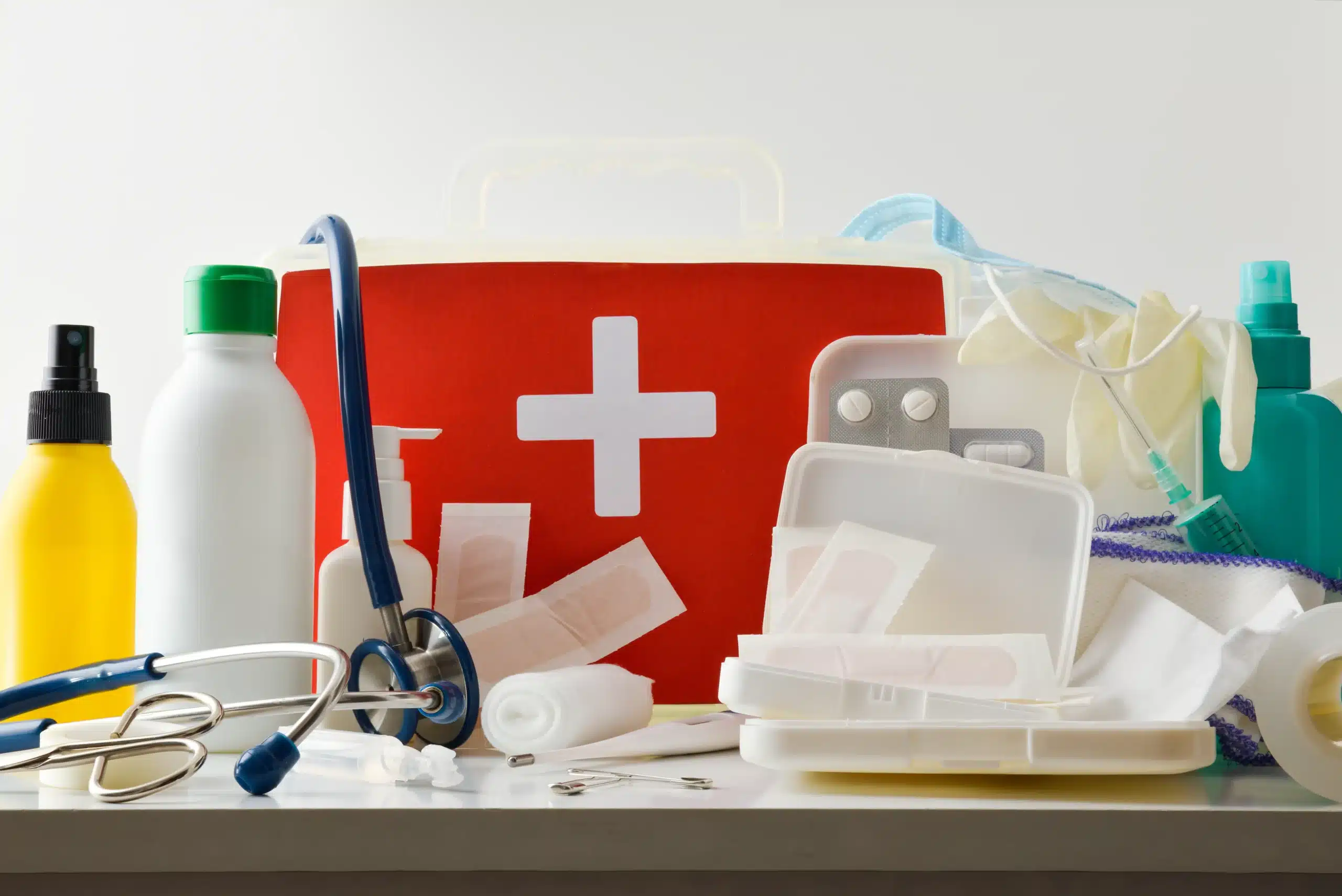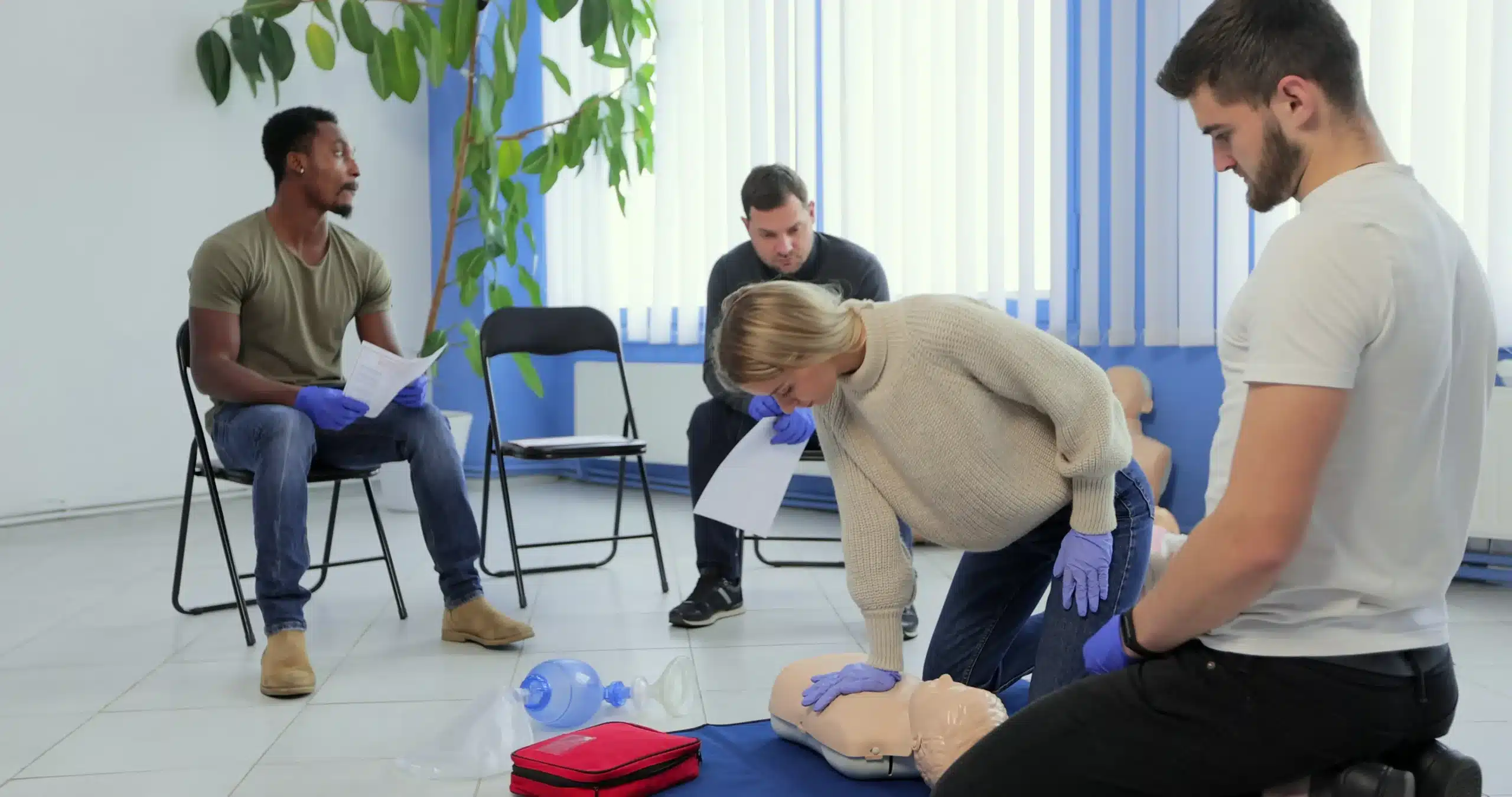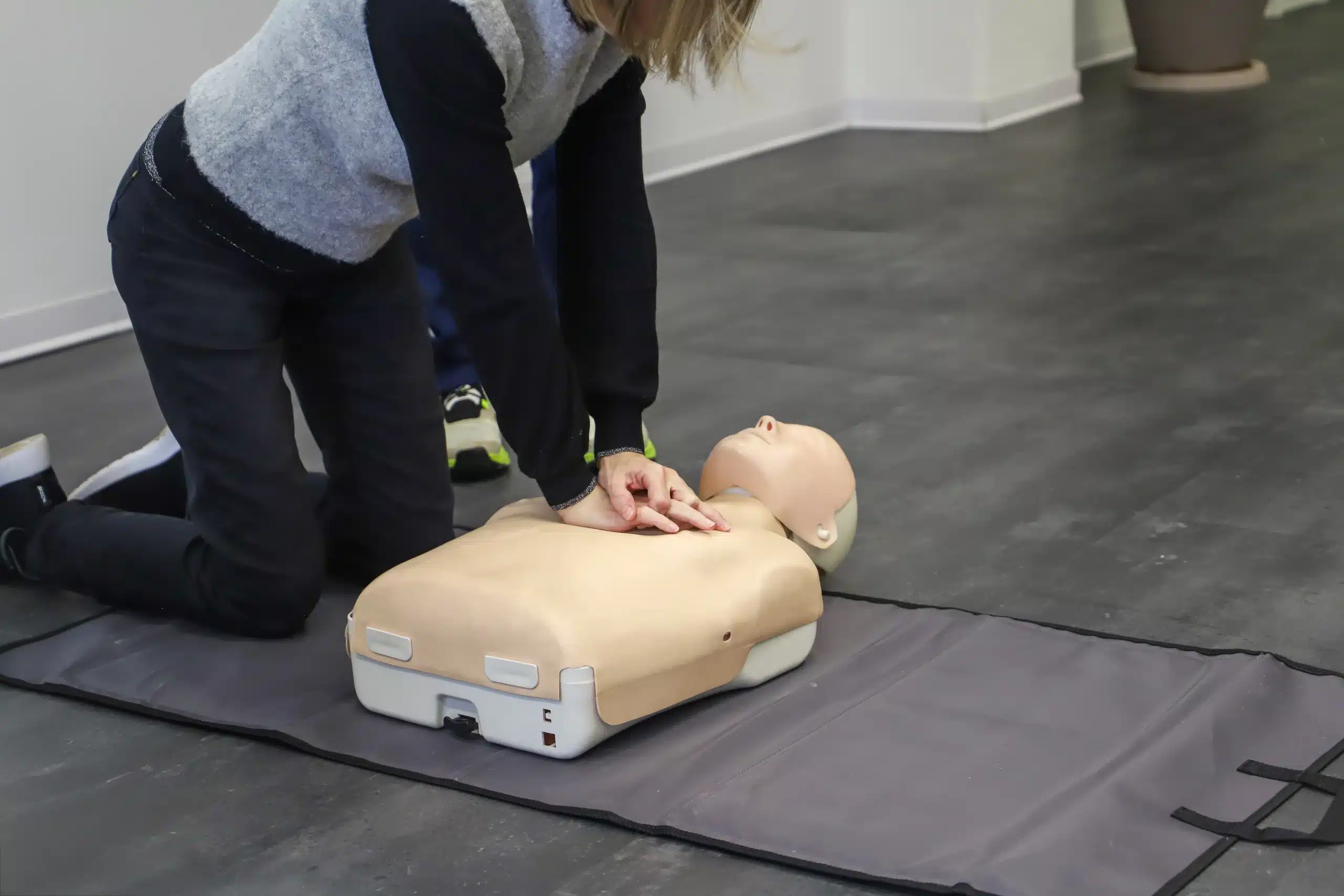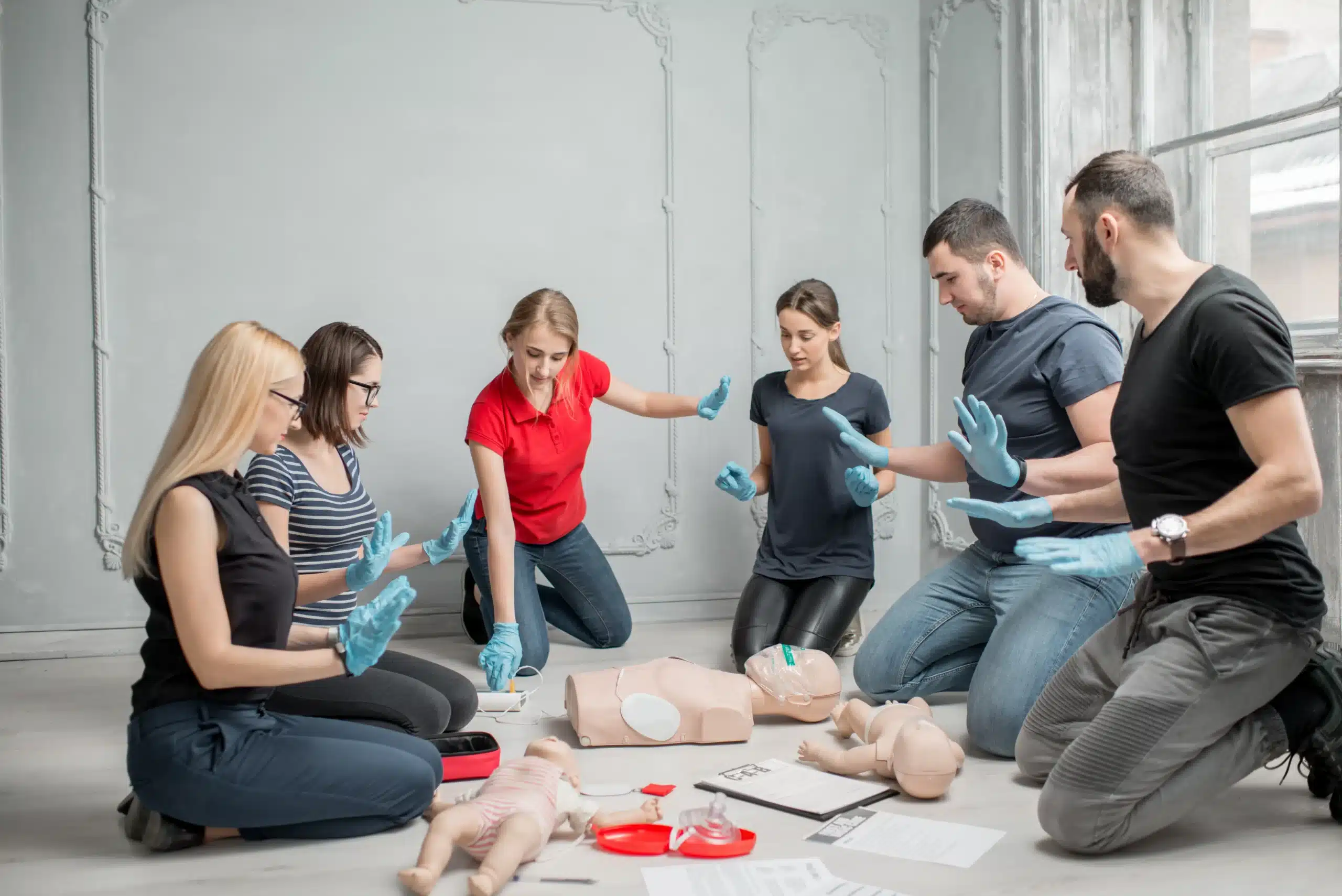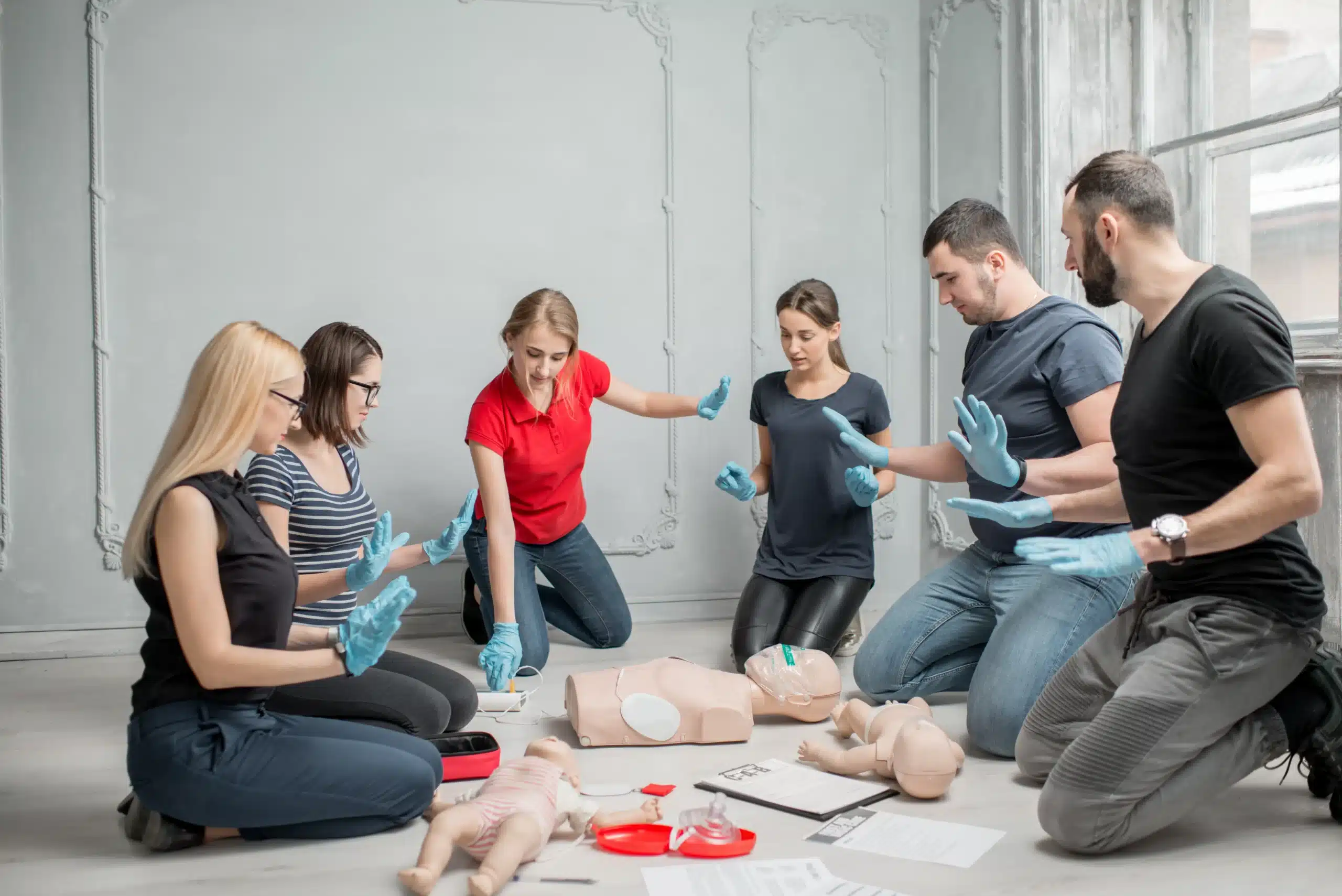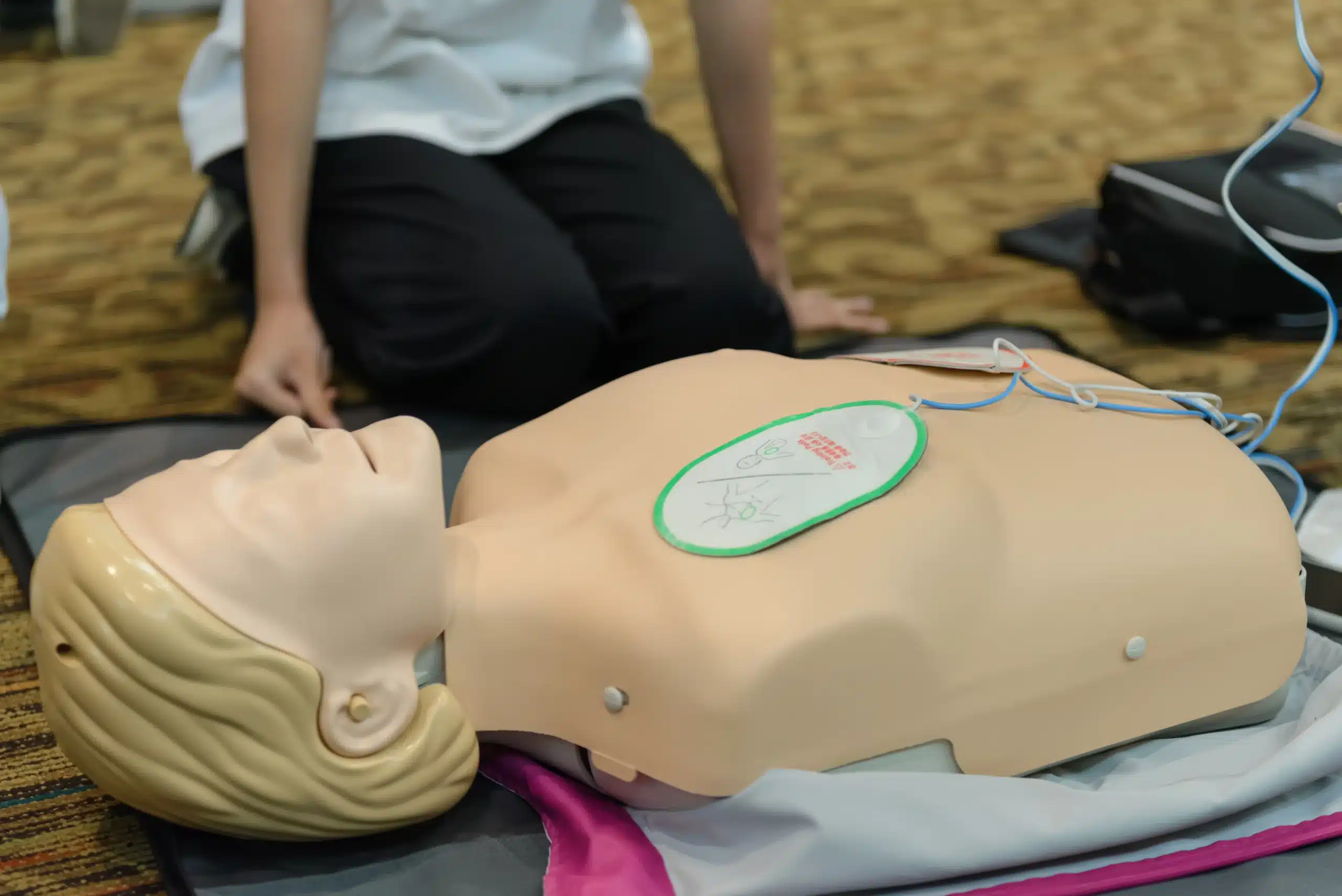Medical emergencies can happen anytime, anywhere. Being prepared isn’t just about having a first-aid kit; it’s about having the skills to use it effectively and provide essential care until professional help arrives. Basic Life Support (BLS) training empowers you to do just that. This post is your comprehensive guide to BLS courses in Berkeley, covering everything from the basics of CPR and AED use to finding the right course and provider for your needs. We’ll explore the different types of BLS courses, discuss certification renewal, and address common misconceptions. Whether you’re a healthcare professional, a student, or a concerned citizen, this guide will help you take the first step towards becoming a more confident and prepared individual.
Key Takeaways
- BLS training empowers anyone to respond to medical emergencies: It equips individuals with life-saving skills like CPR and AED use, benefiting not only healthcare professionals but also teachers, caregivers, and family members.
- Choosing the right BLS course requires careful consideration: Prioritize AHA-certified training from reputable providers, experienced instructors, and comprehensive resources. Factor in course format, schedule, and accessibility to find the best fit.
- BLS certification is vital for healthcare professionals: It directly impacts patient outcomes, upholds ethical and legal standards, and fosters effective teamwork during critical situations. Regular recertification ensures providers stay current with the latest protocols.
What is BLS?
What is BLS and Why is it Important?
BLS stands for Basic Life Support. It’s a critical training program that teaches people how to respond to life-threatening emergencies. It focuses on immediate care, including CPR (cardiopulmonary resuscitation), recognizing and responding to signs of a heart attack or stroke, and using an AED (automated external defibrillator). These skills can make a real difference while waiting for professional medical help to arrive. BLS certification demonstrates a commitment to patient safety and high-quality care. It’s about being prepared to act quickly and confidently in a crisis.
Who Needs BLS Certification?
While often associated with healthcare professionals like doctors and nurses, BLS certification is valuable for a much wider range of people. Anyone who works with the public – think teachers, coaches, lifeguards, and childcare providers – benefits from having these skills. It’s also relevant for those in high-risk workplaces like construction sites. Even if you’re simply a concerned family member wanting to be prepared for anything, BLS training can empower you to help loved ones in need. Essentially, BLS certification is for anyone who wants to be equipped to handle a medical emergency. Find BLS courses near you.
Common BLS Training Misconceptions
There are a few common myths surrounding BLS training. One is that it’s only for medical professionals. This simply isn’t true. As we’ve discussed, BLS skills are valuable for everyone. Another misconception is that certification lasts forever. Actually, BLS certification needs to be renewed regularly to stay current with the latest guidelines and techniques. RQI classes offer a streamlined renewal process. Finally, some people believe BLS training is overly complicated or expensive. In reality, the courses are designed to be straightforward and accessible, and many affordable options are available. Contact us to learn more about our pricing.
Find the Right BLS Course
Finding the right BLS course means understanding your needs and exploring the available options. This section breaks down key aspects to consider when choosing a BLS course.
BLS for Healthcare Providers
BLS for healthcare providers covers core skills needed to respond to life-threatening emergencies. It’s designed for professionals working in hospitals, clinics, and other healthcare settings. These BLS courses emphasize effective teamwork, high-quality CPR, and using an AED. Improving patient outcomes during critical situations relies heavily on healthcare providers having these skills.
CPR and AED Training
CPR and AED training are essential parts of any BLS course. Learning proper CPR techniques and how to use an AED can be life-saving. These skills equip you to respond effectively to cardiac arrest and other breathing emergencies, whether you’re a healthcare professional or not. CPR certification often includes AED training, empowering anyone to assist in a medical crisis.
First Aid Certification
While often included as part of a comprehensive BLS course, first aid certification deserves separate consideration. Basic first aid teaches you to manage injuries and common medical emergencies. BLS certification goes further, preparing you for more critical situations with a higher level of care expected in medical environments. Consider your specific needs and whether basic first aid training alone is sufficient or if BLS certification is more appropriate.
Course Formats: In-Person, Online, and Blended Learning
BLS courses come in various formats to accommodate different learning styles and schedules. In-person classes provide hands-on training and direct interaction with instructors. Online courses offer flexibility and convenience, allowing you to learn at your own pace. Blended learning combines online modules with in-person skills sessions. Explore the different course formats to find what works for you.
Course Duration and Scheduling
BLS courses typically involve several hours of instruction and hands-on practice. The duration can vary depending on the format and provider. BLS certifications are typically valid for two years. Recertification courses are available when your certification is expiring or has expired. Check with your chosen provider for specific course schedules and recertification options.
Essential BLS Skills and Techniques
BLS courses cover essential skills and techniques to manage various medical emergencies. These include high-quality CPR for adults, children, and infants, using an AED, relieving choking, and basic airway management. BLS training equips you to respond confidently and effectively in critical situations, providing crucial care until advanced medical help arrives.
Top BLS Providers in Berkeley
Finding the right BLS course often comes down to choosing a reputable provider. Here are a few well-regarded options for BLS certification in Berkeley:
Safety Training Seminars
Safety Training Seminars offers American Heart Association-certified courses right here in Berkeley, including BLS training. They focus on providing convenient and affordable options for individuals and groups. For those looking for a streamlined certification process, Safety Training Seminars also offers the innovative RQI program. They work to ensure you can find the right course for your needs, and their experienced instructors prioritize high-quality instruction in life-saving techniques. Check out their low price guarantee.
American Heart Association
The American Heart Association (AHA) sets the standard for BLS training. Their courses are known for their credibility and are widely accepted. AHA certification ensures you’re learning evidence-based techniques and receiving a certification recognized across the healthcare industry.
American Red Cross
The American Red Cross is another trusted name in BLS training. They offer comprehensive BLS courses in Berkeley, with the added benefit of flexible learning options. You can choose from in-person classes, online modules, or a blended learning approach that combines both. This flexibility makes it easier to fit BLS training into your busy schedule.
Berkeley CPR Classes
Berkeley CPR Classes specializes in AHA-certified BLS training, offering courses at various locations throughout Northern California. They also provide other essential life-saving courses, making them a convenient option for all your certification needs.
Bay Area CPR
Bay Area CPR offers a blended learning approach to BLS training with online components that prepare you for the in-person skills testing. By reviewing materials online beforehand, you’ll gain a solid foundation in BLS principles, increasing your confidence and preparedness for the hands-on portion of the course. They offer classes in Berkeley and throughout the Bay Area.
BLS Certification: Cost and Value
Pricing and Discounts
BLS courses in Berkeley typically cost between $70 and $100. Several factors influence the final price, including the training provider, the course format (online or in-person), and included materials. Look for training centers, like Safety Training Seminars, that offer a low-price guarantee to get the best value. You might find discounts for group registrations, students, or returning customers, so it’s always a good idea to ask.
Certification Renewal
BLS certification isn’t a one-time deal. You’ll need to recertify regularly to keep your skills and knowledge current with the latest American Heart Association guidelines. Check with your employer or certifying body for specific renewal requirements. Staying current with your certification shows your commitment to providing excellent care.
OSHA Compliance
If your job requires BLS certification, choose a course that meets OSHA requirements. In-person training usually provides a two-year certification that satisfies these workplace standards. Keep in mind that online-only courses typically don’t fulfill OSHA requirements for healthcare providers and other professionals needing hands-on training. Contact Safety Training Seminars to discuss your compliance needs and find the right course. We can help you understand the different options and ensure you receive a certification recognized by your workplace.
Choose Your BLS Course
Finding the right BLS course involves considering several key factors to ensure you receive high-quality training that meets your specific needs. Let’s break down what to look for when making your decision.
Selecting a BLS Provider
Choosing a provider that offers American Heart Association (AHA) certified courses is crucial, as these are widely recognized and respected. Safety Training Seminars, for example, offers a range of AHA-certified courses, including BLS, ACLS, PALS, and First Aid. This ensures participants receive training that aligns with the latest industry standards. While other organizations like the American Red Cross also offer valuable training, make sure any program you select meets your specific certification requirements. Check our Northern California CPR directory for convenient locations.
Instructor Qualifications
The expertise of your instructor directly impacts the quality of your training. Look for courses taught by experienced, certified instructors. Reputable organizations like the AHA have rigorous standards for their instructors, ensuring they possess the necessary knowledge and skills to deliver effective BLS training. Contact us to learn more about the qualifications of our instructors at Safety Training Seminars. We maintain our low price guarantee while upholding the highest standards for our training programs.
Course Resources
A good BLS course should provide you with more than just classroom instruction. Look for providers that offer a variety of resources to support your learning. This might include online materials, practice tests, and access to skills videos. Some providers also offer different levels of courses, such as BLS, ACLS, PALS, and NRP, allowing you to choose the training that best suits your career goals. Review videos can be particularly helpful for reinforcing skills and preparing for the skills test. Consider exploring our RQI classes for a fast and efficient certification process.
Course Accessibility
Finally, consider the accessibility of the course. Does the schedule work with your availability? Are there multiple locations offered? Safety Training Seminars offers classes throughout Northern California, making it easier to find a convenient location and time. Look for a provider that offers flexible scheduling options, including weekend and evening classes, to accommodate busy schedules. We strive to make our courses accessible to everyone.
BLS for Healthcare Professionals: Why It Matters
As a healthcare provider, you’re on the front lines of patient care. BLS certification isn’t just a checkbox; it’s a fundamental skill set directly impacting patient outcomes and your professional life. Let’s explore why BLS matters so much in healthcare.
Improve Patient Outcomes
In critical situations, seconds count. BLS training equips healthcare professionals with the knowledge and skills to respond effectively during emergencies. Knowing how to perform CPR, use an AED, and provide basic life support can significantly improve patient outcomes, increasing survival chances and minimizing long-term complications. This immediate response is often the critical link between life and death for patients experiencing cardiac arrest or other life-threatening events. For more information on the impact of BLS, check out this article on common misconceptions about BLS for healthcare providers. Solid BLS skills are crucial for any healthcare provider.
Legal and Ethical Responsibilities in Healthcare
BLS certification isn’t just about best practices—it’s often a legal and ethical requirement. Many healthcare institutions mandate BLS certification for their staff, recognizing its importance in providing a safe and effective patient care environment. Maintaining your BLS certification protects both the patient and the provider. Ethically, healthcare professionals have a responsibility to provide the best possible care, and BLS training is a cornerstone of that commitment.
Teamwork and Communication
Effective BLS relies heavily on teamwork and clear communication. BLS training emphasizes coordinated efforts during emergencies, ensuring everyone on the healthcare team understands their roles. Clear communication is essential for relaying critical information and coordinating procedures. This collaborative approach, fostered through BLS training, creates a more efficient and effective response during critical situations. This article on BLS highlights its importance for all healthcare team members, not just emergency responders.
Stay Up-to-Date with BLS Protocols
BLS protocols and best practices are constantly evolving. Staying current with the latest guidelines is crucial for providing effective care. Regularly renewing your BLS certification ensures you’re equipped with the most up-to-date knowledge and techniques. This commitment to ongoing learning demonstrates a dedication to providing the highest standard of care. Don’t fall into the trap of thinking BLS training is a one-time event; consistent updates are essential. Staying informed about the latest advancements in BLS can significantly affect patient outcomes.
Related Articles
- BLS Classes in Sacramento: A Complete Guide
- The Lifesaving Importance of CPR in Healthcare
- Basic Life Support (BLS) in Berkeley CA: Top Courses
- BLS Courses in Oakland: A Certification Guide
- BLS Renewal in Concord: Your Complete Guide
Frequently Asked Questions
Is BLS certification only for doctors and nurses? Not at all! While it’s definitely essential for healthcare professionals, BLS certification is a valuable skill for anyone to have, from teachers and coaches to parents and babysitters. It equips you to handle emergencies and potentially save a life, no matter your profession.
How do I choose the right BLS course? Think about your specific needs and what works best for your schedule. Consider whether you prefer in-person instruction or the flexibility of online learning. Also, check if the course is accredited by a reputable organization like the American Heart Association and if it meets any workplace requirements you might have. Don’t hesitate to contact the training provider directly – they can answer your questions and help you find the perfect fit.
What if my BLS certification expires? BLS guidelines and best practices are updated regularly, so renewing your certification is key. Most certifications are valid for two years. Check with your certifying organization or employer for specific renewal requirements. Many providers offer refresher courses to make the process smooth and efficient.
What’s the difference between BLS and First Aid certification? First Aid focuses on treating common injuries like cuts and burns, while BLS deals with more life-threatening situations like cardiac arrest and strokes. BLS training includes CPR, AED use, and other advanced techniques. Often, you can find courses that combine both certifications, which is a great way to be prepared for a wider range of emergencies.
How much does a BLS course cost, and are there any discounts available? Costs vary depending on the provider, location, and course format. It’s always a good idea to compare prices and ask about potential discounts for students, groups, or returning customers. Some providers also offer a low-price guarantee, ensuring you get the best value for your training.


